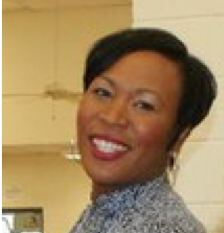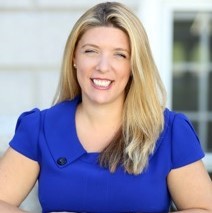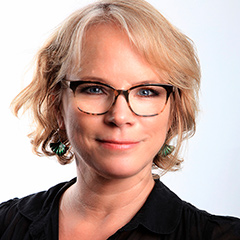As states and districts develop their plans for reopening schools in the fall, one key question is on the minds of many systems leaders: How can we best serve our English Learners if public health guidance requires instruction to be delivered virtually? In response to this question, the English Learners Success Forum pulled together a team of experts and practitioners to develop The Do’s and Don’ts of Distance Learning for English Language Arts and Mathematics. This series is chock full of examples, resources and links designed to help teachers find a new idea or strategy that they can implement with their students right away. We sat down with Dr. Christine Dahnke, Dr. Kia McDaniel and Renae Skarin to talk about these excellent resources and get their advice for how leaders can incorporate them into their fall planning. This interview has been edited for length and clarity.
EDUCATION FIRST: Districts are in the midst of setting up their plans for learning in the fall, including plans to address the unique needs of ELs. What challenges are top of mind for you when it comes to ELs?
CHRISTINE: I am excited to see that academics is slowly becoming the priority. At first, schools and school systems had to deal with the technology divide and, for ELs in particular, that required taking into account the unique language and/or technology needs of students and families. That was a big hurdle for districts. However, now that students have a device, our thinking can shift to what is happening while students are on the device. At the beginning, teachers felt pressure to replicate everything, the exact classroom experience in an online setting. That did not work well—students were tired of being on Zoom all day and teachers did not feel successful. Now, the teacher’s perspective has evolved over time to be focused on providing the most critical components of instruction in terms of content and language development, instead of trying to do everything.
KIA: As districts are in the midst of planning for reopening one of the biggest considerations for students in poverty, students with disabilities, and ELs is the need for increased face-to-face instruction. When we started creating our Do’s and Don’ts guidance, we wanted to make sure that it would be focused on making sure ELs had access to grade level content no matter what instructional model is implemented. We focused on concrete examples that aim to answer questions like: “How do I frame questions on the discussion board so they are accessible to ELs?” or “How do I engage students in discussion with one another?” Our advice goes into detail about how to do that to support teachers to implement this successfully.
RENAE: Building on that, now that educators can pivot toward the new year, there has been a lot of talk about acceleration or remediating the learning that they missed in the previous year. Our advice is focused on strategies that help teachers push the learning forward and support students to do rigorous, grade-level work. It is focused on providing them with formative assessments to support grade level learning and scaffold as necessary any of the unfinished content that students missed.
EDUCATION FIRST: States and districts are knee-deep in planning for school reopening for the fall and many have published either draft or final plans. Are there any bright spots you’re seeing so far?
KIA: One positive thing I’m seeing is that there are considerations for ELs in some way, shape or form. Whether it’s including them in groups of vulnerable populations for face-to-face support or providing for native language support translation or considering their academic needs, I am glad to see that they are included and that people are thinking about ELs. However, I do wonder if we’re not getting it right for any student just yet. We’re all trying to figure this out, we’re all learning and trying to put our plans into place. If we can’t even get the foundation of instruction right, it’s even more difficult to meet the needs of ELs
CHRISTINE: I have seen more of an effort for districts to translate their social media messages in languages beyond English. There’s an uptick in the mindset and idea that families need access to resources about school, public health and food distribution. Districts are starting to see that in order to reach their communities, we need to meet them in languages they speak.
EDUCATION FIRST: Tell us about the resources you’ve created. What was the process? Who was involved and why did you feel the need to create these resources?
RENAE: With the Do’s and Don’ts, we wanted to provide a resource for teachers that was research based, written by practitioners and that teachers could implement in their classrooms tomorrow. On the team, we had two practitioners—Kia and Christine—who are on the ground and understand the needs of school systems. We also had two scholars work with them to bring in the research base. We think that by combining their expertise we can influence and promote an assets based perspective on how to go about instruction for ELs in the fall.
KIA: A priority also was to amplify the voices of educators. ELSF started by administering a survey to get feedback on what teachers around the country were doing, what they were struggling with, what new strategies they had started testing out and what they hoped to do in the fall. We started by looking at the trends and crafted our guidance to respond to the areas that folks were really struggling with. For example: we saw that there was a critical mass of teachers who wanted support scaffolding for math with ELs, so Christine and I had a conversation with the scholars and some additional practitioners. We looked to see what the research said, what recommendations our practitioners came up with together and came up with practical, tangible examples of good practice. We wanted this series to go deeper than just the general guidance and really make it easy for teachers to implement.
CHRISTINE: Building on that, my hope is that teachers get a summer break this year and that they want to engage in some just-in-time learning this summer to prepare themselves for the fall. We’re hopeful that these Do’s and Don’ts can be helpful to them. This is a quick snapshot of simple things teachers can do that will make a big difference for kids.
EDUCATION FIRST: What is your advice for teachers and educators who want to incorporate these practices into their classroom in the fall?
KIA: First, teachers should start with the Do’s and see what they are already doing! Teachers rarely give themselves enough credit to say they are doing things right. Perhaps they thought about the cognates that an EL might need to support a virtual math lesson or maybe they incorporated an opportunity for choice and discussion in a Zoom breakout room. These are great places to start! Then, they should take a look at our list of Don’ts and aim to be more aware of which ones they do on a regular basis. We also included detailed explanations about why that particular practice might keep ELs from accessing grade-level content so teachers can see why we included them in the Don’ts list.
CHRISTINE: Also, they should make sure that they’re thinking of each individual child as an individual child and not treating ELs as one homogenous group of students. We know that ELs are a very diverse group. They have very different needs, backgrounds, languages, family structures and cultures. If teachers look at EL students as a group, it’s a missed opportunity to make sure that every student is getting what they need. Finally, in my mind, make space and time for students to process the reality we are in. Everyone is experiencing this crisis in a different way and ignoring the current reality does your students a disservice. I think it will be very important to provide the space and time for students to process that in a healthy way.
EDUCATION FIRST: So, what comes next for this work? What are you planning to do with these recommendations over the next couple of months?
KIA: We are hopeful that people will start referencing these Do’s and Don’ts and that we’ll see them in place in classrooms! We are planning some webinars featuring the Do’s and Don’ts to get some additional awareness. We’re also thinking about taking some of them and expanding even more. We think that by creating a resource that teachers can implement the next day in their classrooms, we’ll see more teachers adopting better practices to support ELs in a remote learning environment.
Dr. Christine Dahnke is the Senior Director of Research, Accountability and Grants for Orange County Public Schools (FL). She has served in various roles at the district level including Instructional Coach and District Supervisor in Miami-Dade Public Schools, and as an Executive Director of ESOL, World Languages and Professional Development in Duval County Public Schools (FL).
Dr. Kia Myrick McDaniel is the Coordinating Supervisor of Specialty Programs for Prince George’s County Public Schools (MD), leading efforts to support Advanced Programs, Environmental Science, ESOL, STEM, Immersion, and Talented and Gifted Programs. She has worked as a classroom teacher, reading specialist, ESOL teacher, instructional specialist, and ESOL Instructional Supervisor.
Renae Skarin is the Director of Curriculum Review Process at the English Learners Success Forum where she works with leading educational experts to design and implement a process for reviewing and providing feedback to curriculum developers on the strength of supports for ELs.



